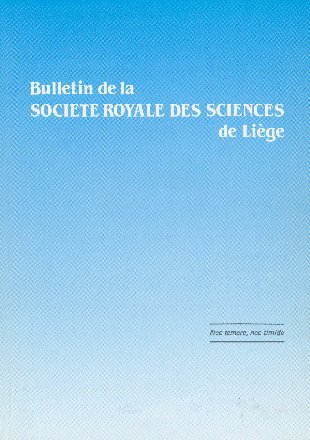- Home
- Volume 85 - Année 2016
- Actes de colloques
- Special edition
- Synthesis of γ-Alumina Nanoparticles with High-Surface-Area via Sol-Gel Method and their Performance for the Removal of Nickel from Aqueous Solution
View(s): 2988 (15 ULiège)
Download(s): 3849 (9 ULiège)
Synthesis of γ-Alumina Nanoparticles with High-Surface-Area via Sol-Gel Method and their Performance for the Removal of Nickel from Aqueous Solution

Attached document(s)
original pdf fileAbstract
In the present investigation, γ-alumina nanoparticles with high specific surface area (351 m2/g) and relatively narrow pore size distribution was prepared using sol-gel method in the presence of aluminum isopropoxide as an aluminum precursor, distilled water, acetic acid as hydrolysis rate controller and tert-butanol as solvent.
The calcined γ-alumina nanoparticles were characterized using X-ray diffractometer (XRD), scanning electron microscope (SEM) and nitrogen adsorption-desorption techniques.
Prepared γ-alumina was tested for the adsorption of Ni2+ from aqueous solution at toxic metal concentrations, and isotherms were determined. The Ni2+ adsorption performance of the as-prepared samples was studied by atomic adsorption spectroscopy (AAS) method.
According to the results, the prepared γ-alumina showed the great adsorption performance of Ni2+ with a high adsorption rate and adsorption capacity of 350 mg/g when the adsorption reached to equilibrium for 3 min at room temperature and pH=5.5. The adsorbed amount increased rapidly with pH variation from pH 3 to 9. The optimum contact time, initial concentration of adsorbate, adsorbent mass and pH were determined and Langmuir, Freundlich and Tempkin adsorption models were obtained using metal ions concentrations in ranging from 30 to 90 mg/L. Correlation coefficients (R2) of Langmuir, Freundlich and Tempkin adsorption isotherms were 0.9961, 0.9831 and 0.9959, respectively, and Langmuir isotherm was more suitable for adsorption on γ-alumina than others. Also presence of Ni2+ ions has been confirmed by infrared spectroscopy.
Efficient synthesis strategy, exceptionally high specific surface area and high adsorption efficiency of these mesoporous γ-alumina nanoparticles showed an excellent ability to remove Ni2+ heavy metal ions from aqueous solution that could find potential utility in the purification of polluted water.






